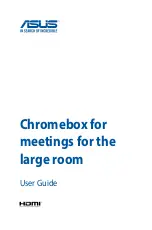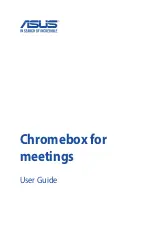
PAGE 137
A 1
T H E A U T O D Y N A M I C S Y N C P R O C E D U R E
The newly developed
AutoDynamicSync (ADS)
procedure allows an automa-
tic synchronisation of almost all available Audio codecs on the market.
The procedute differentiates between outgoing and incoming calls:
Outgoing call
When an outgoing call is made, the caller selects the desired configuration
when he enters the calling number. In this way, the desired Audio quality, the
number of B channels and the signalling procedure is set. Since, usually the
caller knows which Audio codec he calls on the remote side, a certain Audio
transmission quality can be forced in this way. If, contrary to the expectations
the remote side uses a non-matching procedure, the ADS automatically sear-
ches for an ISO/MPEG frame or a G.722 signal.
ADS recognizes ISO/MPEG frames with 64-kBit/s, Layer III oder Layer II (if
the option is enabled), any sampling frequency (also half sampling frequen-
cies such as 16-kHz and 24-kHz, except 22,05-kHz and 44,1-kHz) and any
mode (Mono, Dual Channel, Stereo, Joint Stereo). Additionally, an inverted
ISO/MPEG signal is also decoded correctly.
If instead of a ISO/MPEG frame a G.722 signal is found, the synchronisation
procedures according to H.221/H.242 and SRT (Statistical Recovered Timing)
are supported.
In this way, it is ensured that at least a connection in 7-kHz quality is esta-
blished.
Incoming call
If there is an incoming call, the calling Audio codec is recognised fully auto-
metically. The procedure works with 1 B channel as well as 2 B channel con-
nections. For accepting the call, you should configure the Audio codec to a
mode marked with .
TIP
Since some Audio codecs do not support different transmission parameters
in transmit and receive direction,
MAGIC DC7/AC1
can synchronise them.
To ensute that the encoder uses the same transmission mode as the decoder
for incoming call, you should activate the option
Encoder follows Decoder
on incoming calls
.
For outgoing calls, you can still select the transmission mode.
Summary of Contents for MAGIC AC1 XIP/XIP RM
Page 2: ... ...
Page 4: ......
Page 6: ... ...
Page 16: ...PAGE 16 S a f e t y ...
Page 22: ...PAGE 22 P u t t i n g t h e s y s t e m i n t o o p e r a t i o n ...
Page 53: ...PAGE 53 W i n d o w s P C S o f t w a r e 4 7 2 1 2 SIP Parameters ...
Page 106: ...PAGE 106 W i n d o w s P C S o f t w a r e ...
Page 126: ...PAGE 126 O p t i o n M i x e r T o o l P l u g I n ...
Page 136: ...PAGE 136 O p t i o n R e m o t e C o n t r o l S o f t w a r e ...
Page 138: ...PAGE 138 ...
Page 140: ...PAGE 140 L i s t o f t h e t r a n s m i s s i o n m o d e s ...
Page 142: ...PAGE 142 L i s t o f t h e t r a n s m i s s i o n m o d e s ...
Page 152: ...PAGE 152 I n t e r f a c e s ...
Page 156: ...PAGE 156 T e c h n i c a l D a t a LICENSE CE UL FCC ...
Page 160: ...PAGE 160 T e c h n i c a l D a t a ...
Page 164: ...PAGE 164 T e c h n i c a l D a t a ...
Page 166: ...PAGE 166 S e r v i c e I n f o r m a t i o n ...
Page 174: ...PAGE 174 I n d e x ...
Page 176: ...PAGE 176 ...
















































